43 how do transport labels differ from standard ghs labels
GHS Labels: What You Need to Know - Lowry Solutions GHS is an acronym for the Globally Harmonized System of Classification and Labeling of Chemicals, the system for standardizing and harmonizing the classification and labeling of chemicals. According to OSHA, it intends to accomplish the following with GHS labels: Define the health, physical and environmental hazards of chemicals EUR-Lex - 32008R1272 - EN - EUR-Lex - Europa Regulation (EC) No 1272/2008 of the European Parliament and of the Council of 16 December 2008 on classification, labelling and packaging of substances and mixtures, amending and repealing Directives 67/548/EEC and 1999/45/EC, and amending Regulation (EC) No 1907/2006 (Text with EEA relevance)
What You Need to Know About GHS Labels | Custom Label Blog GHS labels should include: Signal words: Indicates the relative severity level of the hazard. "Danger" and "Warning" are often used - the former for more severe hazard categories. Each category has assigned signal words. Symbols/Pictograms: Each GHS hazard class and category* has a pictogram to convey health, physical and ...
.jpg)
How do transport labels differ from standard ghs labels
Requirements for labeling of products shipped for export to domestic ... Scenario 1: Labeling requirements for individually packaged hazardous (GHS & DOT)substances:A manufacturer containerizes and ships individually packaged quantities (e.g., pints, gallons, drums) of hazardous chemicals. These containers are prepared for transportation to a number of different domestic and international destinations. GHS vs. DOT Classification - Lion Technology As stated above, both the DOT and GHS assign hazard classes to hazardous chemicals. A small difference, however, is that the DOT divides these hazards into one of nine numbered hazard classes (e.g., flammable liquids are "Class 3″), while the GHS just names them (a flammable liquid is just a "flammable liquid"). GHS Labeling Requirements: The Definitive Guide ... - Luminer All GHS hazard statements that apply to a certain chemical must appear on its label. Unlike GHS signal words, there is no hierarchy wherein one statement would be sufficient to cover lesser hazards. That said, to save space, these statements can be combined on GHS labels, so long as they still communicate the vital information.
How do transport labels differ from standard ghs labels. Understanding GHS Pictograms - GHS Training GHS pictograms are a visual system that was created to convey information about dangerous chemicals in a way that everyone could understand, regardless of the language they spoke. These pictograms are also often called hazmat symbols. This is helpful in facilities where employees speak different languages. It is even more important, however, in ... How GHS labels differ around the world | Croner-i Why GHS "harmonised" label elements differ Although the elements of labelling are harmonised, many circumstances contribute to a lack of harmony in the information that appears on the same chemical product when labelled in different countries. Three main inconsistencies stand as obstacles to hopes for a truly harmonised system. New GHS Labels vs. DOT Labels - Lion Technology GHS labels are required to have four pieces of information on them: a signal word, hazard statements, precautionary statements, and a pictogram. The full text of these requirements can be found at 29 CFR 1910.1200, Appendix C. While some of the pictograms are exclusive to GHS, many of them have the same appearance as DOT pictograms. GHS: The Globally Harmonized System for Labeling [Updated 2019] OSHA's GHS labeling requirements are now an extension of their Hazard Communication Program requirements since they have been aligned to promote continuity between SDSs and other companies labeling efforts. These requirements consist of four primary parts: The signal word GHS pictogram (s) The hazard statement The precautionary statement
GHS Label Examples GHS Label Examples. Little Pro on 2018-08-07 12557. You might know the basic elements of a GHS label for hazardous chemicals already. Let's take a look at a few real GHS labeling examples to help you understand what a label looks like and how to put it on chemical packages or containers. The examples come from various sources. How Transport and CLP-GHS are different - GHS Classification Courses Transport labels are generally required for the outer package of goods, for example the outside layer of a pallet containing boxes or bottles, but GHS and CLP require each individual package to be labelled, and inner and outer boxes and packages to be labelled as well (there are some specific rules which apply). GHS Label Requirements, Symbols, and Classifications When OSHA aligned the Hazard Communication Standard 1910.1200 with the Globally Harmonized System of Classification and Labelling of Chemicals (GHS) in 2012, it was with good reason. Prior to these modifications, numerous internal and external chemical labeling systems existed, which often meant confusion for workers, delays in shipping and loss of business revenue. HazCom 2012, GHS, and the Labeling Systems: GHS, DOT, NFPA, and HMIS In that situation, the GHS-compliant shipping labels are on the smaller, "inside" containers, and a DOT label will be on the outside box. The second situation is when you've got a larger chemical container that won't be put into a separate, "outer" container for shipping. An example is a large chemical tote or a 55-gallon drum.
Consolidated TEXT: 32008R1272 — EN — 01.03.2022 Article 3. Hazardous substances and mixtures and specification of hazard classes. A substance or a mixture fulfilling the criteria relating to physical hazards, health hazards or environmental hazards, laid down in Parts 2 to 5 of Annex I is hazardous and shall be classified in relation to the respective hazard classes provided for in that Annex. Help: Answer - HCL Labels, Inc. The label must have a red background with the pictogram, text, and number in black or white. In contrast, GHS labels must have a "signal word", corresponding hazard pictogram (s), hazard and precautionary statements, product, and supplier identification. What are the 6 Elements of a GHS Label? - Computype Pictograms 1. Product Identifier/Ingredient Disclosure This component of the GHS label is typically placed in the top left-hand corner of the label, and it identifies the hazardous chemical or ingredient that is in this product. It can state the name, code number, or batch number. This allows for the chemical to be confidently identified. 2. GHS is IMPORTANT but don't confuse Labels vs the OTHER ... - LinkedIn Transport pictograms are different in appearance than the GHS pictograms. Annex 7 of the Purple Book explains how the GHS pictograms are expected to be proportional to the size of the label text....
Global GHS Label Size Requirement 2019 - chemsafetypro.com The dimension of a GHS label shall be related to package sizes; The minimum size of a pictogram on a GHS label shall be related to the minimum size of the GHS label; The minimum size of a GHS pictogram on a GHS label is usually much smaller than a transport pictogram (100mm x 100mm); A GHS label must be legible and prominently displayed;
GHS Label (Globally Harmonized System Label) - HSEWatch GHS Label stands for Globally Harmonized System label. This is a system of classification and labelling of chemicals, which is an internationally agreed-upon standard managed by the United Nations and was set up to replace the assortment of hazardous material classification and labelling schemes previously used around the world.
Amoxapine | C17H16ClN3O - PubChem Amoxapine | C17H16ClN3O | CID 2170 - structure, chemical names, physical and chemical properties, classification, patents, literature, biological activities, safety ...
What Required Information Must GHS Labels Include? - MPC Here's a look at each requirement for GHS-compliant primary container labels. Signal word - The signal word, such as "Danger," or "Warning," is used to indicate the hazard level. Danger indicates the most serious hazard level, while Warning indicates a lower level of risk.
EUR-Lex - 32008R1272 - EN - EUR-Lex - Europa (4) Trade in substances and mixtures is an issue relating not only to the internal market, but also to the global market. Enterprises should therefore benefit from the global harmonisation of rules for classification and labelling and from consistency between, on the one hand, the rules for classification and labelling for supply and use and, on the other hand, those for transport.
PDF Ghs Labeling Guide - Ishn transport label. Only the UN transport marking & labels are required for outer packagings. (Additional examples of arrangements of the GHS labels may be found in Annex 7 of the GHS) 3-METHYL DIFLAMMALINE UNXXXX Inner Packaging: Plastic bottle with GHS hazard warning label. Resources: "Globally Harmonized System of Classification and Labeling ...
Do You Need To Print GHS Labels? | Cut Sheet Labels GHS labels need to be durable and should be able to withstand harsh weather conditions. They usually use a permanent adhesive to ensure that these labels are not easily removed. In the event that containers having hazardous products are washed at shore, they should still have these labels on to warn of impending danger.
GHS or DOT—Which Label Should You Use? - EHS Daily Advisor When OSHA amended the HazCom standard (29 CFR 1910.1200) to incorporate GHS, the Agency said that when a pictogram is required by the DOT to appear on a shipped container, then the HazCom-GHS pictogram for the same hazard may not be used. This is still the current regulation at 49 CFR 1910.1200 Appendix C.2.3.3.
Comparison of GHS and Transport ClassificationSimplifying IMDG Code Harmonization & Differences Transport regulations are harmonized with GHS standard for classification of dangerous goods. Latest Transport Regulations such as ADR 2015 & IMDG Code 2014 is aligned with GHS Revision 5 published in the year 2013. Transport Regulations Classifies Dangerous Goods into 9 Classes and Environmentally hazardous substances.
Pesticide Labeling Questions & Answers | US EPA Oct 14, 2021 · The Agency will allow the use of the GHS (Globally Harmonized System for Hazard Communication) explosiveness symbol and the GHS flammability symbol on pesticide labeling and it is not limited to NAFTA labels. 40 CFR 156.78 requires warning statements on the flammability or explosive characteristics of pesticide products meeting listed criteria.
Globally Harmonized System of Classification and Labelling of Chemicals ... The Globally Harmonized System of Classification and Labelling of Chemicals ( GHS) is an internationally agreed-upon standard managed by the United Nations that was set up to replace the assortment of hazardous material classification and labelling schemes previously used around the world.
Danger Vs. Warning - OSHA/GHS Labeling - Official HCL Labels Blog Understanding the difference between Danger and Warning can help you easily identify the hazards you may encounter while working with various chemicals. The new GHS labeling system gone into effect on June 1st, 2016, has specific guidelines that employers need to adhere to in regards to the labeling of hazardous chemicals. One of these new… Continue reading Danger Vs. Warning - OSHA/GHS ...
Pyrethrin I | C21H28O3 - PubChem For Pyrethrin I /a component of pyrethrum/ (USEPA/OPP Pesticide Code: 069008) there are 0 labels match. /SRP: Not registered for current use in the U.S., but approved pesticide uses may change periodically and so federal, state and local authorities must be consulted for currently approved uses./
What is the Globally Harmonized System (GHS) + Cheat Sheet GHS is an acronym for the Globally Harmonized System of Classification and Labeling of Chemicals, a framework that standardizes the classification and labeling of chemicals worldwide. Its goal is to establish criteria for the classification of health, physical and environmental hazards, and specify what information should be included on hazard ...
Global Harmonization of Hazard Classification and Labeling Systems The GHS is the culmination of more than a decade of work. After ten years of technical work and negotiation, a United Nations Economic and Social Council Subcommittee adopted the Globally Harmonized System for Classification and Labeling ("GHS") and recommended that it be disseminated throughout the world.
Complete Guide to GHS Labels and Safety Data Sheets - P&G Pro Safety Data Sheets (formerly known as Material Safety Data Sheets) are filled with important information for employers and employees who handle, use and store cleaning products and chemicals. The new Safety Data Sheets have 16 standard sections, including: Identification of the substance or mixture and supplier. Hazards identification.
GHS Flashcards | Quizlet Terms in this set (11) what are the aims of GHS. -to provide countries without te existing systems with a recognized framework for classifying and labeling chemicals. -to reduce the need for the evaluation of chemicals. -to facilitate the international trade in properly assessed and identified chemicals. -to provide a globally comprehensible ...
GHS Labeling Requirements: The Definitive Guide ... - Luminer All GHS hazard statements that apply to a certain chemical must appear on its label. Unlike GHS signal words, there is no hierarchy wherein one statement would be sufficient to cover lesser hazards. That said, to save space, these statements can be combined on GHS labels, so long as they still communicate the vital information.
GHS vs. DOT Classification - Lion Technology As stated above, both the DOT and GHS assign hazard classes to hazardous chemicals. A small difference, however, is that the DOT divides these hazards into one of nine numbered hazard classes (e.g., flammable liquids are "Class 3″), while the GHS just names them (a flammable liquid is just a "flammable liquid").
Requirements for labeling of products shipped for export to domestic ... Scenario 1: Labeling requirements for individually packaged hazardous (GHS & DOT)substances:A manufacturer containerizes and ships individually packaged quantities (e.g., pints, gallons, drums) of hazardous chemicals. These containers are prepared for transportation to a number of different domestic and international destinations.

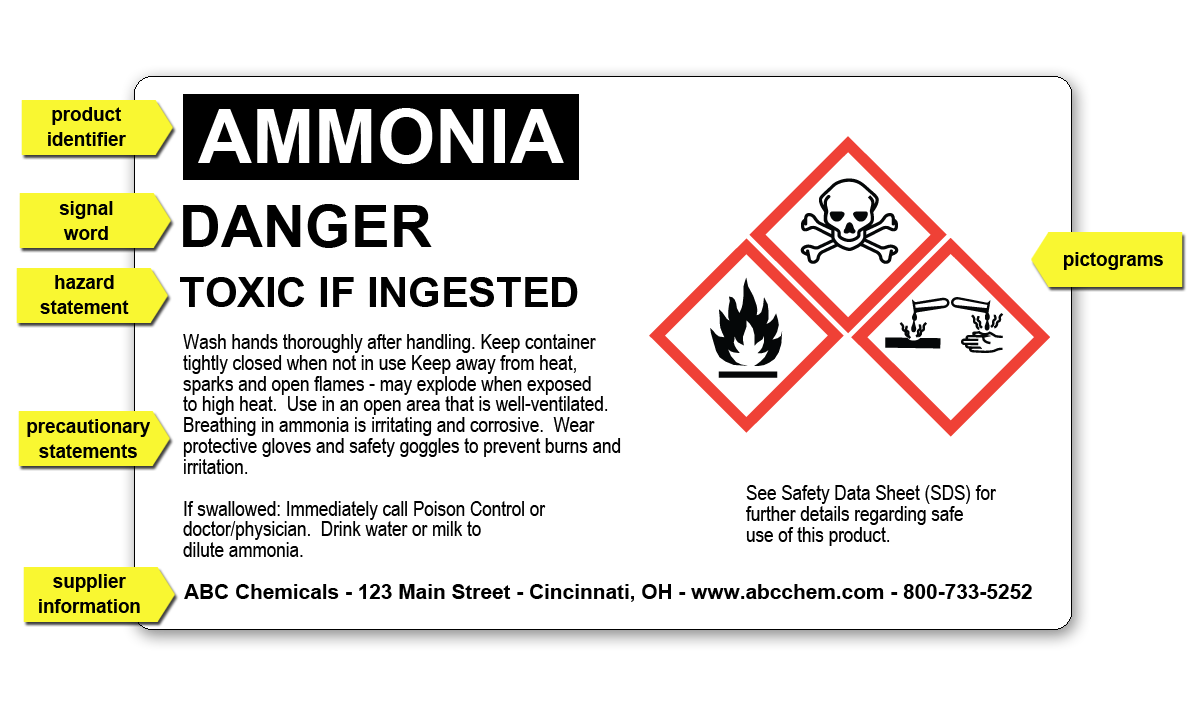

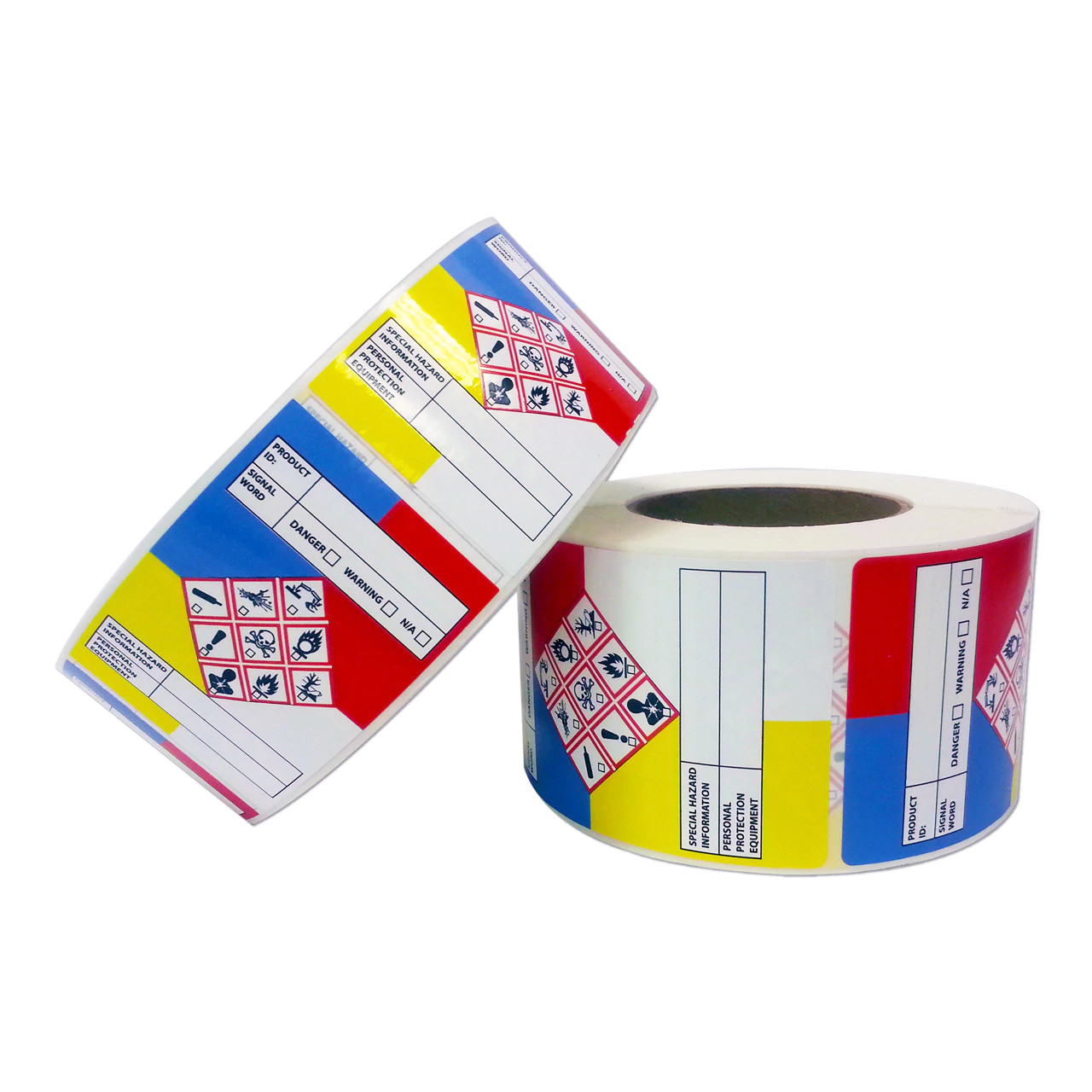





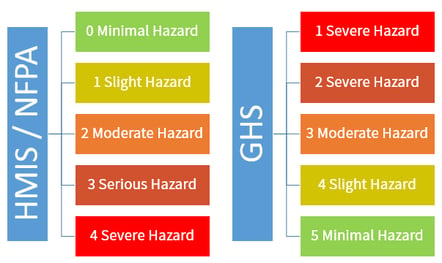
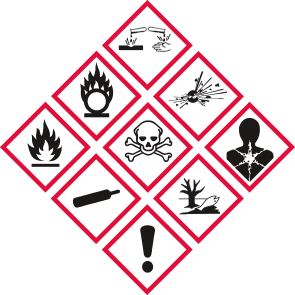
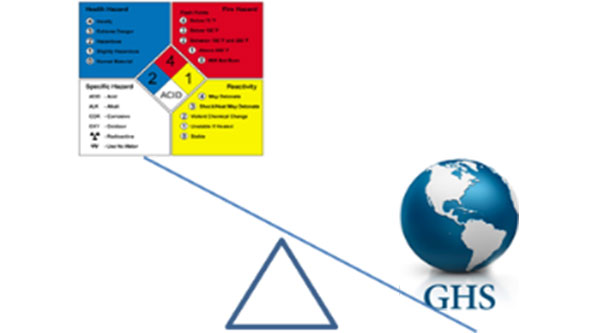








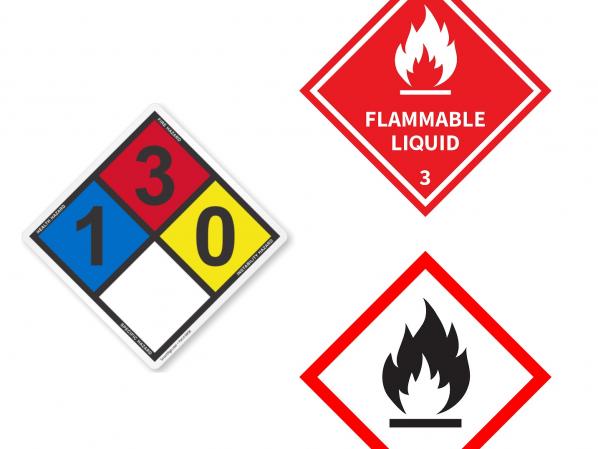

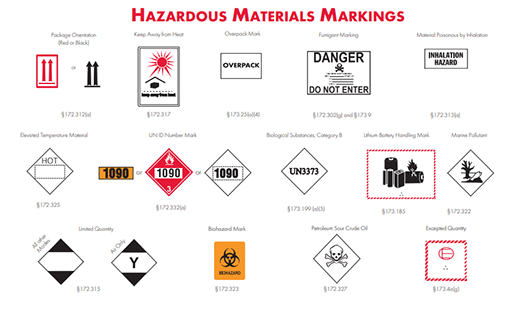
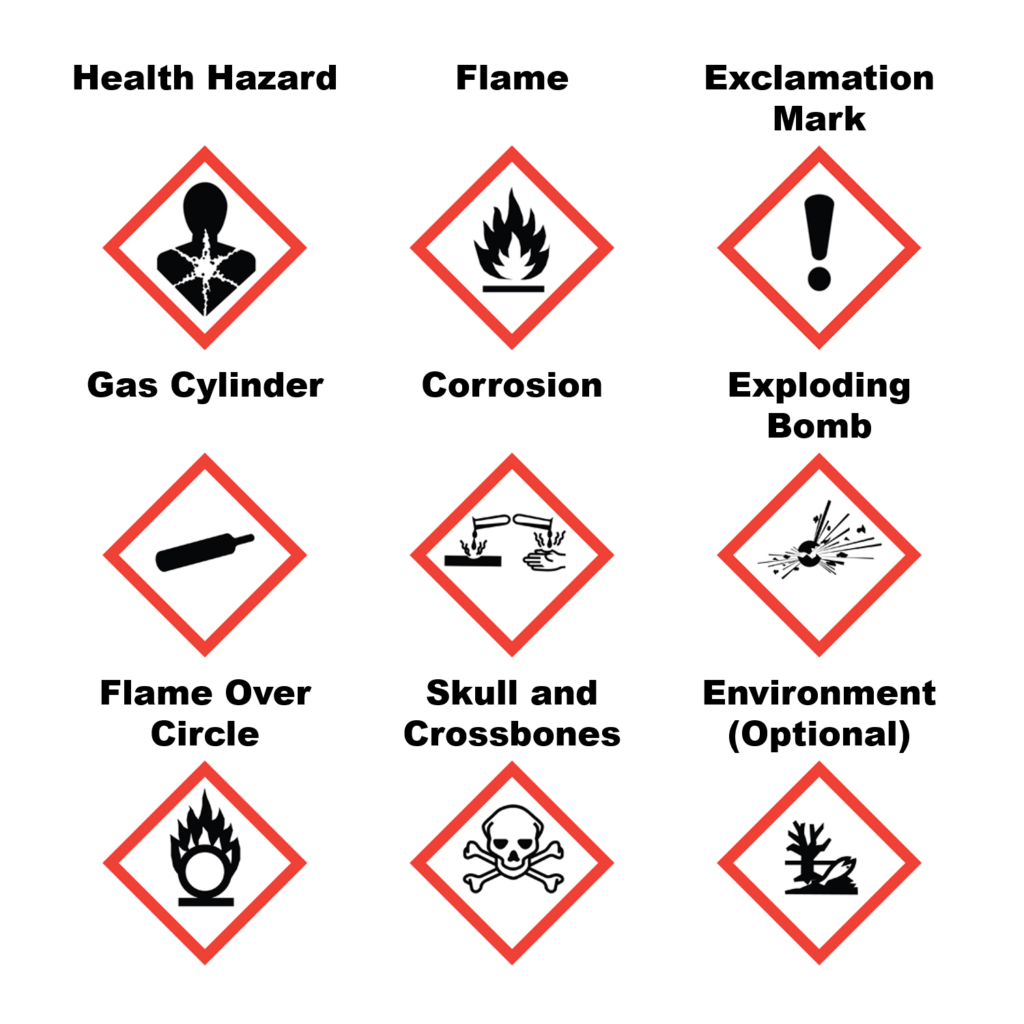

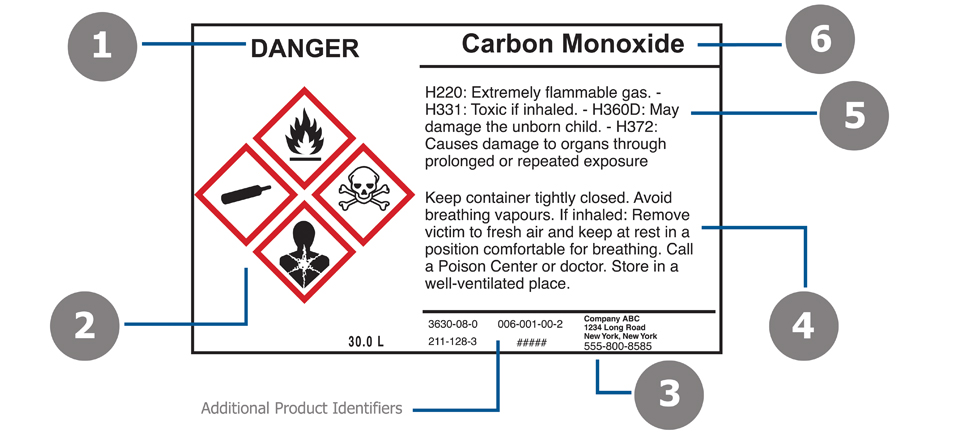








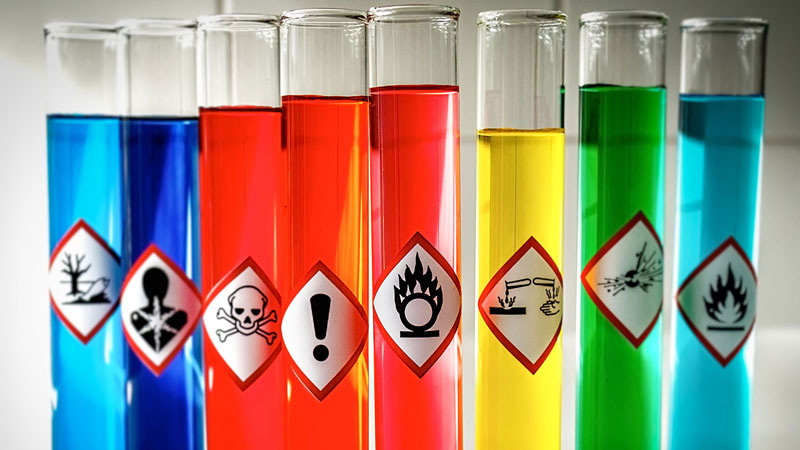




Post a Comment for "43 how do transport labels differ from standard ghs labels"